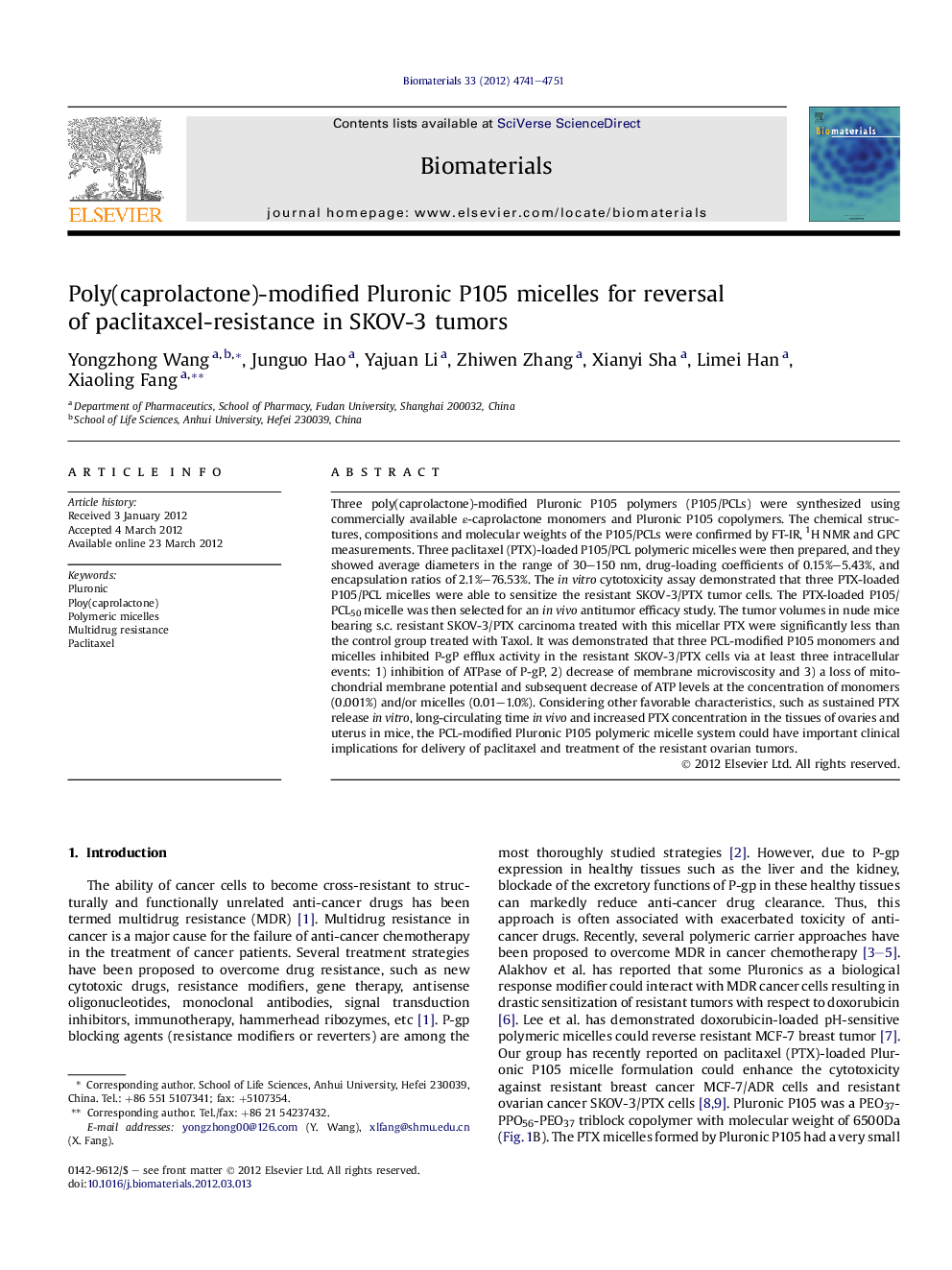| Article ID | Journal | Published Year | Pages | File Type |
|---|---|---|---|---|
| 6810 | Biomaterials | 2012 | 11 Pages |
Three poly(caprolactone)-modified Pluronic P105 polymers (P105/PCLs) were synthesized using commercially available ε-caprolactone monomers and Pluronic P105 copolymers. The chemical structures, compositions and molecular weights of the P105/PCLs were confirmed by FT-IR, 1H NMR and GPC measurements. Three paclitaxel (PTX)-loaded P105/PCL polymeric micelles were then prepared, and they showed average diameters in the range of 30–150 nm, drug-loading coefficients of 0.15%–5.43%, and encapsulation ratios of 2.1%–76.53%. The in vitro cytotoxicity assay demonstrated that three PTX-loaded P105/PCL micelles were able to sensitize the resistant SKOV-3/PTX tumor cells. The PTX-loaded P105/PCL50 micelle was then selected for an in vivo antitumor efficacy study. The tumor volumes in nude mice bearing s.c. resistant SKOV-3/PTX carcinoma treated with this micellar PTX were significantly less than the control group treated with Taxol. It was demonstrated that three PCL-modified P105 monomers and micelles inhibited P-gP efflux activity in the resistant SKOV-3/PTX cells via at least three intracellular events: 1) inhibition of ATPase of P-gP, 2) decrease of membrane microviscosity and 3) a loss of mitochondrial membrane potential and subsequent decrease of ATP levels at the concentration of monomers (0.001%) and/or micelles (0.01–1.0%). Considering other favorable characteristics, such as sustained PTX release in vitro, long-circulating time in vivo and increased PTX concentration in the tissues of ovaries and uterus in mice, the PCL-modified Pluronic P105 polymeric micelle system could have important clinical implications for delivery of paclitaxel and treatment of the resistant ovarian tumors.
